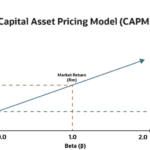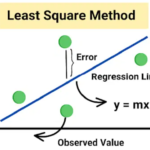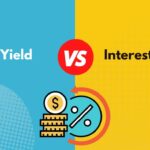
By ATGL
Updated May 24, 2024
Dividend investing is a popular strategy among investors seeking a balance of income and growth in their portfolios. By understanding the fundamentals, advantages, and potential drawbacks of dividend investing, you can determine if this approach aligns with your financial goals.
What Is Dividend Investing?
Dividend investing involves purchasing stocks that pay regular dividends, which are portions of a company’s earnings distributed to shareholders. This strategy focuses on building a portfolio of stocks from companies with a strong history of paying dividends. Dividends can be distributed quarterly, semi-annually, or annually, providing a consistent income stream. There are several pros and cons of dividend investing.
Advantages of Dividend Investing
Regular Income Stream
One of the primary advantages of dividend investing is the regular income it provides. Dividends offer a steady cash flow, which can be particularly appealing for retirees or those looking to supplement their income. This regular income stream can help investors meet their financial needs without selling their shares, allowing their principal investment to potentially grow over time.
Compounding Returns
Reinvesting dividends can significantly increase returns through the power of compounding. By using dividends to purchase additional shares, investors can increase their holdings without additional capital outlay. Over time, these reinvested dividends can generate their own dividends, leading to exponential growth in the value of the investment portfolio. This compounding effect can be a powerful driver of long-term wealth.
Lower Volatility
Dividend-paying stocks often exhibit lower volatility compared to non-dividend-paying stocks. Companies that pay dividends typically have stable earnings and strong financial health, which can make their stock prices less susceptible to market fluctuations. This stability can provide a buffer during economic downturns, making dividend stocks an attractive option for risk-averse investors.
Potential for Capital Appreciation
In addition to providing regular income, dividend-paying stocks have the potential for capital appreciation. Many companies that pay dividends also experience growth in their stock price, offering investors the dual benefits of income and capital gains. With the potential for both regular income and asset growth, dividend-paying stocks can significantly enhance your financial stability and wealth accumulation.
Disadvantages of Dividend Investing
Tax Implications
While dividends provide a steady income, they come with tax implications. In many jurisdictions, dividends are taxed at a different rate than capital gains. Depending on your tax bracket, you may owe taxes on dividend income, which can reduce your overall returns. Consider and understand the tax treatment of dividends in your country when planning your investment strategy.
Dividend Cuts and Suspensions
Dividend payments are not guaranteed and can be cut or suspended, particularly during economic downturns or financial difficulties faced by the company. When a company reduces or stops its dividend payments, it can significantly impact an investor’s income stream. Monitor the financial health of the companies in your portfolio and diversify your investments to mitigate this risk.
Market Risks
Dividend investing is not immune to market risks. Factors such as interest rate fluctuations, economic downturns, and sector-specific challenges can affect the performance of dividend-paying stocks. For instance, rising interest rates can make dividend stocks less attractive compared to bonds, leading to potential declines in stock prices. However, these risks can be managed with a strong investment strategy. Above the Greenline’s dividend growth model can help you navigate these risks effectively.
How to Start Dividend Investing
Starting a dividend investing journey involves careful research and selection of dividend-paying stocks. Here are some detailed steps and tips to guide you:
- Identify Dividend-Paying Stocks: Look for companies with a consistent history of paying dividends and a stable financial outlook. Utilize financial news websites and stock screening tools to find suitable candidates. Focus on established companies with a solid track record of regular dividend payments.
- Evaluate Dividend Yield and Payout Ratio: Assess the dividend yield (annual dividend per share divided by the stock price) and payout ratio (percentage of earnings paid out as dividends). A high dividend yield may be attractive, but verify the payout ratio is sustainable, indicating the company can maintain its dividend payments. Sustainable payout ratios vary based on the company’s structure, but they typically fall below 60%.
- Analyze Financial Health: Review the company’s financial statements to evaluate its earnings stability, cash flow, and debt levels. Companies with strong financial health are more likely to continue paying and possibly increasing dividends. Look for consistent revenue growth, manageable debt levels, and positive free cash flow.
- Consider Sector Diversification: Diversify your dividend portfolio across various sectors to reduce risk. Different industries perform differently under various economic conditions, and diversification can help mitigate sector-specific risks. A diversified portfolio might include dividend stocks from sectors like utilities, consumer goods, healthcare, and technology.
- Assess Risk Tolerance: Understand your risk tolerance when selecting dividend stocks. While dividend stocks tend to be less volatile than growth stocks, they still carry risks. Your choices should align with your investment goals and risk appetite. Younger investors with a longer time horizon might balance their portfolios with both dividend and growth stocks, while those closer to retirement may prioritize stability and income.
- Consider Mutual Funds and ETFs: If selecting individual stocks feels overwhelming, consider investing in mutual funds or ETFs that focus on dividend-paying stocks. These funds provide instant diversification and professional management, making it easier to implement a dividend investing strategy without extensive research.
- Monitor and Rebalance Your Portfolio: Regularly review your portfolio to keep it aligned with your investment objectives. Monitor the performance of your dividend stocks, and be prepared to make adjustments if a company’s financial health deteriorates or if it cuts its dividend. Rebalancing your portfolio can help maintain the desired level of risk and return.
- Reinvest Dividends: To maximize the benefits of dividend investing, consider reinvesting your dividends. Reinvesting dividends allows you to purchase additional shares, leading to compounding returns over time. Many brokerage accounts offer automatic dividend reinvestment plans (DRIPs), making this process seamless.
- Utilize Research Tools and Resources: Leverage various research tools and resources to stay informed about dividend stocks and market trends. Subscribing to investment newsletters, following financial news, and using stock analysis platforms can provide valuable insights and help refine your dividend investing strategy.
This approach can provide a reliable source of income while offering potential for growth and capital appreciation.
Leverage Our Dividend Growth Investment Strategy
Dividend investing offers numerous benefits, including a regular income stream, compounding returns, lower volatility, and potential for capital appreciation. However, be aware of the potential disadvantages, such as tax implications, dividend cuts, and market risks. By conducting thorough research and leveraging expert strategies, you can successfully incorporate dividend investing into your financial plan and achieve your long-term investment goals.
At Above the Greenline, we specialize in helping investors navigate the complexities of dividend investing. Our dividend growth investment strategy focuses on identifying companies with a history of dividend growth, strong financial health, and potential for capital appreciation. By leveraging our expertise, you can optimize your portfolio for both income and growth.
Take advantage of our proven strategies to enhance your investment returns and secure a steady income stream. Explore our dividend growth strategy and start building a resilient and profitable dividend portfolio today.






